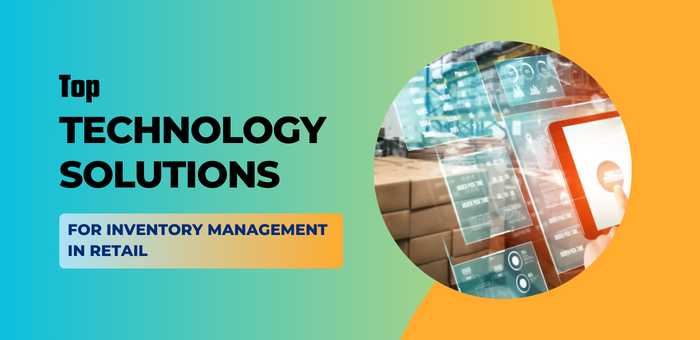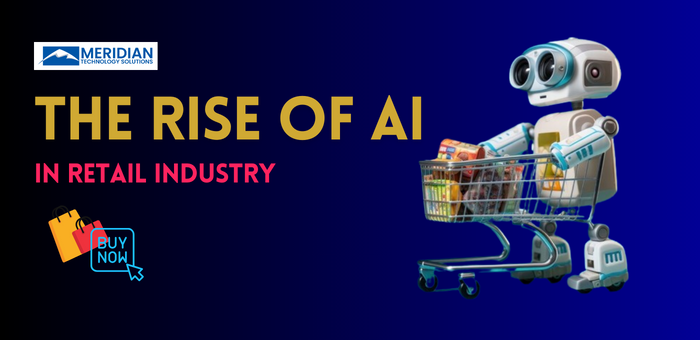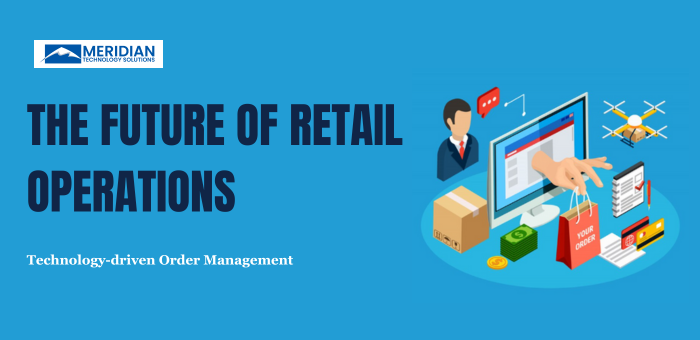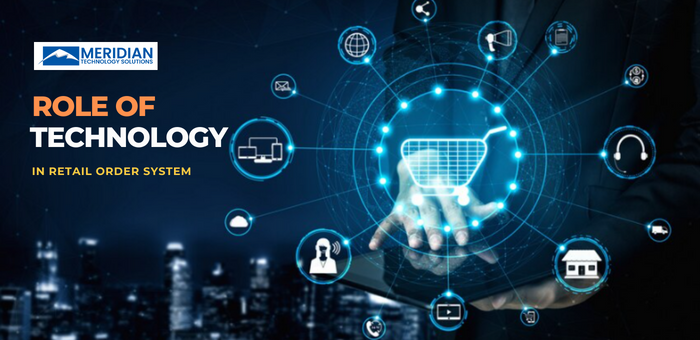Top Technology Solutions For Inventory Management in Retail
Efficient inventory management in retail industry is essential to stay competitive. Nowadays, traditional methods to increase sales and customer satisfaction have become outdated. This paves the way for innovative technologies to streamline the process.
In 2024, 25% more retailers are planning to invest in new systems. As, the prime issue in 46% of warehouses today is human error. 7% of small businesses don’t track inventory at all.
Radio-Frequency Identification (RFID) technology has emerged as a game-changer in inventory management. Unlike traditional barcodes, RFID tags use radio frequency signals to transmit data, enabling real-time tracking of each product. This leads to enhanced accuracy, reduced manual errors, and improved overall efficiency. Retailers can track their inventory with pinpoint accuracy, preventing stockouts and overstock situations.
Key Features:
- Real-Time Tracking: RFID tags use radio frequency signals for instantaneous data transmission, allowing real-time tracking of each product.
- Enhanced Accuracy: Unlike traditional barcodes, RFID technology significantly reduces manual errors in inventory management.
- Pinpoint Accuracy: Retailers can track inventory with precision, preventing stockouts and overstock situations.
- Efficiency Improvement: The technology streamlines inventory processes, leading to improved overall efficiency in the supply chain.
- Prevention of Stockouts: RFID technology helps prevent stockouts by providing timely information on inventory levels.
(2) Automated Shelves and Smart Shelving Systems
Imagine shelves that can manage themselves! Automated shelving systems equipped with sensors can monitor inventory levels in real-time. When products are purchased or restocked, the system updates the inventory database instantly. Smart shelving systems also provide insights into consumer behavior, helping retailers optimize their product placements based on customer preferences and shopping patterns.
- Real-Time Monitoring: Sensors on automated shelves monitor inventory levels in real-time, updating the database instantly.
- Consumer Insights: Smart shelving systems provide insights into consumer behavior, aiding retailers in optimizing product placements.
- Self-Management: Automated shelves can manage themselves, reducing the need for manual intervention in inventory management.
- Optimized Restocking: The system facilitates optimized restocking processes based on actual consumer demand.
- Adaptability: Retailers can adapt their inventory strategies based on data gathered from smart shelving systems.
(3) Internet of Things (IoT) for Inventory Control
The Internet of Things (IoT) connects everyday devices to the internet, and in the retail sector, it is transforming inventory management. Smart sensors and devices embedded in products, shelves, and storage areas communicate with each other, creating a network that constantly updates inventory levels. This connectivity enables timely reordering, reduces manual labor, and minimizes the risk of stockouts or overstocking.
Key Features:
- Connectivity: Smart sensors and devices create a network, constantly updating inventory levels through IoT.
- Timely Reordering: IoT enables timely reordering by providing real-time information on stock levels.
- Reduced Manual Labor: The connectivity of IoT reduces the need for manual intervention in inventory management processes.
- Minimized Stockouts: The constant communication between devices minimizes the risk of stockouts.
- Efficiency Enhancement: IoT transforms inventory management processes, enhancing overall efficiency in supply chain operations.
(4) Blockchain for Enhanced Transparency
Blockchain, the technology behind cryptocurrencies, is making waves in inventory management for its unparalleled transparency and security. By implementing blockchain, retailers can create an unalterable and decentralized ledger of every transaction in the supply chain. This not only reduces the risk of fraud but also ensures that the entire journey of a product, from manufacturer to the store shelf, is recorded with precision.
- Unalterable Ledger: Blockchain creates an unalterable and decentralized ledger, ensuring transparency in the supply chain.
- Fraud Reduction: Implementation of blockchain reduces the risk of fraud in inventory transactions.
- End-to-End Recording: The technology records the entire journey of a product, from manufacturer to store shelf, with precision.
- Trust Building: Blockchain enhances trust among stakeholders by providing a transparent record of transactions.
- Security: The decentralized nature of blockchain adds an extra layer of security to inventory management processes.Read Also – Tech Trends Driving Retail
(5) AI and ML Algorithms
AI and ML algorithms analyze vast amounts of data to predict future trends and optimize inventory levels. These technologies can forecast demand patterns, seasonality, and even unexpected events that may impact inventory, helping retailers make informed decisions. AI-driven systems can automatically reorder products, suggest pricing strategies, and dynamically adjust stock levels, creating a more adaptive and responsive inventory management process.
Key Features:
- Data Analysis: AI and ML algorithms analyze vast amounts of data to predict future trends and optimize inventory levels.
- Demand Forecasting: These technologies forecast demand patterns, helping retailers make informed decisions.
- Automated Reordering: AI-driven systems can automatically reorder products based on demand predictions.
- Adaptive Inventory Management: AI and ML enable dynamic adjustments to stock levels for a more responsive inventory management process.
- Informed Decision-Making: Retailers can make informed decisions regarding pricing strategies and inventory optimization.
(6) AR for Inventory Visualization
AR technology is not limited to gaming or entertainment; it’s also finding its place in retail inventory management. Retailers can use AR applications to visualize their inventory in real-time. This allows for quick and accurate stock assessments, reducing the time spent on manual checks. Moreover, AR can assist in order picking and restocking by providing visual cues and directions through smart glasses or mobile devices.
- Real-Time Inventory Visualization: AR applications enable retailers to visualize their inventory in real-time, providing an accurate representation.
- Quick Stock Assessments: AR technology allows for swift and precise stock assessments, reducing the need for time-consuming manual checks.
- Order Picking Assistance: AR assists in order picking by providing visual cues and directions, improving the efficiency of the fulfillment process.
- Restocking Support: AR can guide staff during restocking activities, ensuring products are placed in the correct locations.
- Compatibility with Smart Devices: AR functionality extends to smart glasses and mobile devices, enhancing accessibility and usability.
(7) Cloud-Based Inventory Management Systems
Cloud technology has revolutionized how businesses store and access data. Cloud-based inventory management systems provide real-time visibility across multiple locations, allowing retailers to monitor and manage their inventory remotely. This accessibility improves collaboration between different departments and facilitates faster decision-making, ensuring that everyone in the supply chain is on the same page.
Key Features:
- Real-Time Visibility: Cloud-based systems provide real-time visibility into inventory across multiple locations.
- Remote Monitoring and Management: Retailers can monitor and manage inventory remotely, improving flexibility and efficiency.
- Collaboration Enhancement: Cloud technology facilitates collaboration between different departments involved in inventory management.
- Fast Decision-Making: Access to real-time data accelerates decision-making processes in the supply chain.
- Data Security and Accessibility: Cloud systems offer secure data storage and easy accessibility for authorized personnel.
(8) Mobile Point of Sale (mPOS) Solutions
Traditional point-of-sale systems are evolving into mobile solutions, offering retailers the flexibility to manage inventory on the go. With mPOS solutions, staff can process transactions, check stock levels, and update inventory from anywhere in the store. This not only enhances efficiency but also improves the overall customer experience, as staff can provide instant assistance to shoppers on the sales floor.
- Inventory Management on the Go: mPOS solutions offer the flexibility to manage inventory from any location within the store.
- Transaction Processing: Staff can process transactions, check stock levels, and update inventory using mobile devices.
- Customer Assistance: Mobile solutions enable staff to provide instant assistance to shoppers on the sales floor.
- Real-Time Updates: Inventory data is updated in real-time, ensuring accurate information for both staff and customers.
- Adaptability and Mobility: The evolution from traditional POS to mobile solutions enhances adaptability and mobility in retail operations.
In conclusion, the retail sector is undergoing a technological revolution, and inventory management is at the forefront of this transformation. From RFID technology for precise tracking to AI-driven algorithms for intelligent decision-making, retailers have a plethora of innovative solutions at their disposal.
Using these these technologies not only streamlines operations but also sets the stage for a more agile, responsive, and customer-centric retail experience. As we move forward, the synergy between technology and retail will continue to redefine how businesses manage their inventory and achieve success in the market.
Contact us to know more! We’re technology experts!







